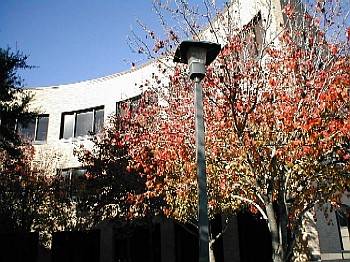History

Early in 1970, Billy Mac Jones, President of Southwest Texas State University, initiated a study of the potential for the University to participate in the development of the Texas healthcare workforce. In the fall of 1971, based on the study’s recommendations, Southwest Texas State University proposed an Allied School of Health Professions, and the following spring, the Coordinating Board for Higher Education approved the proposal. Thus, the Allied School of Health Professions had its official beginning on April 24, 1972.
Before long, the School was a leader in university-based education in the health professions. However, the School was not without its critics. Most people had no concept of the problems involved in integrating healthcare educational programs into the academic environment. Many were skeptical that a school of health professions could succeed outside a metropolitan area and without convenient access to clinical facilities. However, one example of the School's success was its ability to award associate degrees in nursing until 1979. The program courses were taught at Baptist Memorial Hospital in San Antonio and graduated 244 students. Others questioned the appropriateness of offering health professions programs at an academic institution, despite the fact that medicine was one of the first courses of study to be offered at early universities. Critics believed that such programs were merely “training” and had no place in traditional higher education.
But those people involved in the earliest stages of the school shared a vision, and many critics are amazed at how quickly the School became a reality. The rapid development of such a multi-faceted technical and professional discipline in higher education was unprecedented. Professionals in the health professions worked alongside faculty members to transform the complex disciplines into the solidly established fields of study that they are today.
During the first years of the Allied School of Health Professions, only three people were employed: a dean, Dr. Don C. Green, who also served as department chair; a program director, Mr. Cade Harkins, who was also the only faculty member; and, a secretary, Ms. Roxanne McKimmey. With an annual budget of $30,000, the School offered its first program, Inhalation Therapy (now Respiratory Care), to an initial enrollment of twenty-four students.
There were no similar schools in Texas to use as models for combining academic and clinical education; in fact, there was no guarantee that students would enroll in these courses. Working long hours in healthcare settings and traveling hundreds of miles per week to provide courses on-site became a way of life for faculty. Facilities that were inadequate, substandard, and often borrowed did not dampen the faculty’s enthusiasm for their programs. Camaraderie developed among faculty as they moved from such places as a coffee room, an old house, the old Education Building, the Science Building and Strahan Gym, Old Main, San Marcos Hall, Lavaca Hall, the Den (a former student “snack shack”), a building on the old San Marcos Academy campus (condemned while it was occupied), to its home in its own beautiful building with state-of-the-art facilities. The shared camaraderie contributed to the realization of the vision as much as the individuals who honored their commitment to the School, its programs, and students.
By 1997, on its twenty-fifth anniversary, The School of Health Professions was one of the largest schools of its kind in Texas, with eight departments and programs offering fourteen graduate and undergraduate degrees. In addition, the School had its own computer lab, the Health Resource Center, the Texas Long Term Care Institute, and the Walter H. Richter Institute of Social Work Research. In 1997 there were 1,367 undergraduate and graduate students taking courses from 65 full time faculty members. At this time the school had graduated 732 students with associate degrees, 2,702 students with baccalaureate degrees, and 1,071 students with master’s degrees.
In 2009, the decision was made to move the School of Social Work and the Walter H. Richter Institute of Social Work Research to the College of Applied Arts due to the collaborative opportunities provided by the growth and expansion of the Department of Criminal Justice. In the Fall of 2010, the St. David's School of Nursing opened its doors to its first students. Offering a Bachelor of Science Degree in Nursing, this state-of-the-art facility is located in the Round Rock Higher Education Center.
Today, Texas State University College of Health Professions is organized into eight academic units: School of Health Administration, St. David's School of Nursing, Departments of Communication Disorders, Health Information Management, Respiratory Care, and Physical Therapy, and Programs in Clinical Laboratory Science, and Radiation Therapy. Baccalaureate degrees, Master’s degrees, Clinical Doctoral degrees, and certificate programs are offered. Over 850 affiliation agreements are maintained to provide clinicals, internships, and field experience for the students. In addition to these academic units the College continues with a specialized computer lab, the institute of Texas Long Term Care, clinics for Physical Therapy and Speech Language Hearing, and the Texas State Sleep Lab.
We celebrate the commitment of everyone who has helped build the College of Health Professions: students, faculty, staff, and administrators. They dared to believe in the vision of educating health professions in a university centered environment, they committed themselves to the vision, and we honor this success.
